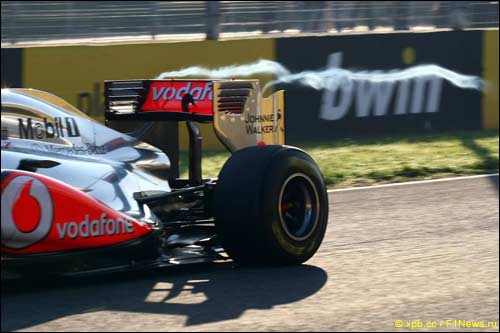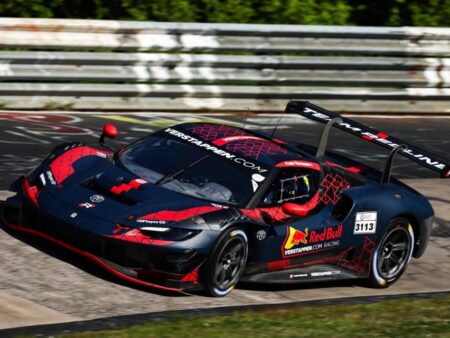
As the roar of engines fills the humid air of Marina Bay, Formula 1 drivers prepare not just for a race against their competitors, but against one of nature`s most formidable forces: extreme heat. The Singapore Grand Prix, a spectacular night race under dazzling lights, is renowned for pushing human endurance to its absolute limits. This year, with the FIA officially declaring a `heat hazard,` a sophisticated piece of technology is taking center stage: the F1 cooling vest.
The Crucible of the Cockpit: Where Heat Meets Human Limit
Imagine being encased in a multi-layered fireproof suit, strapped tightly into a confined carbon-fiber monocoque, while navigating a demanding street circuit for nearly two hours. Now add external temperatures reaching 31°C (81°F) and humidity soaring above 75%. Inside the cockpit, temperatures can easily climb to a scorching 60°C – a veritable sauna, only with G-forces routinely exceeding 5G. This isn`t just uncomfortable; it`s a physiological nightmare.
Drivers routinely lose up to three kilograms of body weight, or three liters of fluid, during a race like Singapore. This isn`t mere perspiration; it`s a rapid depletion that can lead to severe dehydration, a dangerous drop in concentration, and even a risk of losing consciousness. The memories of the 2023 Qatar Grand Prix, where several drivers succumbed to the heat, with one retiring and another collapsing post-race, served as a stark, undeniable reminder that even the fittest athletes have their breaking point.
Engineering the Chill: A Deep Dive into Cooling Vests
Enter the cooling vest – a seemingly straightforward concept, yet one refined through intense engineering. These vests are not just damp cloths; they are intricate systems designed to actively lower a driver`s core body temperature. The mechanism is deceptively simple: thin tubes, meticulously stitched into the vest`s fabric, circulate a chilled coolant. This liquid draws heat away from the driver`s torso, providing a crucial thermal respite in an otherwise infernal environment.
The FIA`s `heat hazard` declaration, a first for F1 race director Rui Marques, isn`t just a suggestion. It comes with a regulatory tweak: an additional five kilograms are added to the car`s minimum weight to accommodate the vest`s hardware. Drivers opting out still carry the ballast, ensuring no competitive advantage for eschewing safety. It’s a classic F1 solution: adding weight to regulate performance, even when the goal is human well-being. A rather elegant, if slightly ironic, approach to a burning problem.
A Vest of Contradictions: The Practical Realities
While the concept of a cooling vest is lauded, its practical application hasn`t been without its quirks. Drivers, ever the discerning critics of their equipment, have voiced concerns. Early iterations featured connecting valves positioned awkwardly, becoming sources of discomfort under the intense G-forces. The very material designed to hold the cooling tubes can feel thick and cumbersome beneath the multi-layered fireproof overalls, adding another layer of constraint in an already tight space.
And then there`s the ever-present F1 question: reliability. A cooling system that fails mid-race isn`t merely useless; it could ironically act as a heat insulator, trapping the driver`s body heat, transforming a potential savior into a tormentor. Williams driver Carlos Sainz, reflecting on the technology, noted the initial limitations: “At the beginning, we had it to work more or less for half an hour. Hopefully now the whole system can work at least for an hour.” A two-hour race, an hour of cooling – it`s progress, but the battle isn`t entirely won.
“When you`re racing in 90% humidity and the cockpits are getting on for 60 degrees, it`s a bit of a sauna inside the car. So I think we all welcome it.” – George Russell, Mercedes Driver
Yet, driver opinions are varied. George Russell praises the “good concept” for its utility in “90% humidity and 60-degree cockpits.” Nico Hulkenberg was swayed after witnessing Alex Albon`s post-race freshness in Jeddah compared to his own exhaustion. However, even seven-time champion Lewis Hamilton admits to discomfort, describing it as “quite uncomfortable” and “itches a lot.” The quest for optimal driver comfort within extreme performance parameters remains a fascinating, ongoing challenge.
Beyond the Finish Line: The Human Element in High-Tech Sport
The F1 cooling vest represents more than just a piece of kit; it`s a symbol of the relentless pursuit of performance married with an increasing focus on driver safety and well-being. In a sport where fractions of a second and human limits are constantly re-evaluated, even seemingly minor physiological advantages can translate into crucial performance gains. The ability to maintain cognitive function and physical stamina for the entire race distance in hostile conditions is paramount.
This evolving technology also sparks a broader conversation: how far should human endurance be pushed in elite sport, and where does technology step in to augment, rather than diminish, the athletic challenge? F1 has always been about pushing boundaries – technological, physical, and mental. The cooling vest is just the latest chapter in this narrative, a high-tech truce between man and element, ensuring the spectacle continues, even as the world around the track gets hotter.
The Ever-Evolving Frontier of Driver Optimization
As the lights go out in Singapore, and the cars thunder around the circuit, the cooling vests will silently perform their critical duty, an invisible shield against the oppressive heat. They are a testament to Formula 1`s holistic approach to innovation, extending beyond aerodynamic wizardry and engine power to the very core of the human element. The battle against heat is far from over, but with each iteration of these clever vests, drivers are better equipped to face the furnace, ensuring that the only thing truly boiling is the competition itself.









